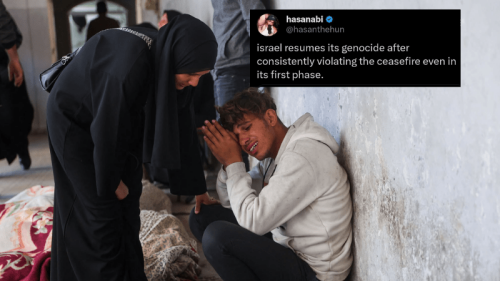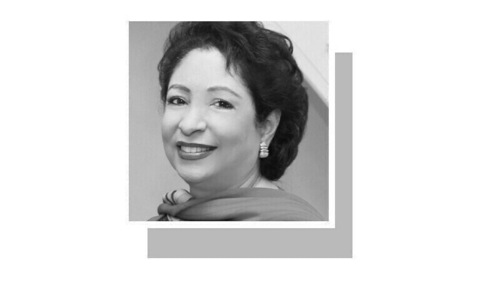PTI may be forgiven for a lot of things it has done and not done, but it will struggle to explain even to itself how it could mess up the one thing it considers its core strength. This failing came into focus this week as the Transparency International survey landed on Pakistan’s political battlefield like a 155mm artillery shell. The annual survey provides a ranking of countries based on the perception of corruption, and follows a detailed methodology to tabulate its results. In the past the PTI leadership has been using this survey as a stick to beat the PML-N with. To the shock and horror of the ruling party, Pakistan under its watch has slipped in the corruption ranking to a ten-year low.
Various aspects of this survey have been debated to death these last few days. But there is one facet that continues to hide in plain sight. And it relates to PTI’s strategic failure in managing its own perception. If this hurts, it should. With an army of spokespersons and media managers, and relentless focus on media and communications, PTI should have been able to spin the worst of situations to its advantage. Strangely, it may have done the opposite.
Inside the Red Zone media managers were scurrying this week to somehow curtail the perceptions disaster unfolding in slow motion. It was a perfect storm of problems at a most imperfect time. The triple whammy of these PR and perception disasters knocked the wind out of the government at a time when political and economic pressures are mounting by the day.
The triple whammy: first Prime Minister Imran Khan uttered a threat live on TV when he should have been selling his government’s performance, and skewed national debate in the opposite direction of what his media managers had planned. Second, the Transparency International survey blasted a massive hole in the PTI’s carefully cultivated narrative. And third — almost as if to reinforce the second disaster — the government’s accountability czar Barrister Shahzad Akbar was forced out in disgrace. When it rains, it pours. It really pours. And yet, an umbrella of positive perception management can do wonders when such clouds burst. This week has reminded the ruling PTI — if a reminder was in fact needed — that in its obsession to manage the nitty gritty of day-to-day communication, it forgot to take stock of the bigger picture. Had its media managers zoomed out of these crises, they could have seen the opportunity standing right in front of their eyes. And it did not appear overnight. It has been there all along, bang in the middle of it all busy being ignored.
It is known by one name: Ehsaas.
But Ehsaas is touted by the PM and his colleagues all the time, you might say. True. But there is a fundamental, crucial and critical difference between mentioning something, and selling it. If there is one takeaway from lesson in knowing the difference, it is this: somewhere in its zeal to demolish the opposition, the government forgot to build itself up. The events of this week reinforced this grim reality in a rather cruel way.
Here’s how. Imran Khan’s politics is held up by three pillars: (1) Crusade against corruption (2) Accountability of the powerful, and (3) Social welfare state. The first two require the firm hand of the state while the third one needs its soft heart. On paper, this triple agenda packs a solid punch. In of itself, the agenda is enough to occupy any government attention and priorities for its five-year term. But somewhere after coming to power and bumbling through the initial stages of governance, PTI fell victim to its own container-generated zeal and couldn’t keep its eye on the ball. Things that could have easily been middled on the bat began to find the gap between the bat and the pad.
Editorial: PM Imran's warning is an implicit acknowledgement that PTI can find itself out of power
Of these three main items that define the government’s politics, the first two dominated its discourse in such a visceral manner that the third one got crowded out. The entire information and communication juggernaut of the government focused solely on trying to decimate the opposition while churning out allegations and accusations — often poorly dressed up as evidence — that it gradually began to sag under the weight of their own numerous contradictions. This strategy was bound to deliver diminishing returns. When it did, now as we speak, the government is suddenly finding itself on shaky political ground.
It need not have been this way. While the PTI’s media managers were fighting to outdo each other in their vitriol — and also coping with the revolving door of their jobs — some people were quietly working to build, brick by brick, the third agenda of PTI’s politics: a social welfare programme so vast, and so detailed, and so well-organised that it could have become the very definition of PTI’s governance. The Ehsaas programme, led by SAPM Dr Sania Nishtar, has expanded into a massive network of social protections for nearly 30 per cent of the country’s population. Here’s the problem though: most people know about it but very few know all that should be known about it. The government has financed Ehsaas, promoted Ehsaas, touted Ehsaas, but it has failed to explain Ehsaas. If there is one glaring failure of PTI’s communication strategy, it is this.
According to its official website, Ehsaas programme has more than 20 initiatives within the larger matrix of social protection. Taken together they constitute an immense governance initiative which is — unlike many others — actually delivering results. Recently Ehsaas completed a digital survey of more than 34 million households across the country. This massive exercise was bigger than the population census and has enabled the government to collect a treasure trove of data that would be invaluable for planning of projects if utilised properly. The survey includes data on households’ information regarding demographics, socio-economic status, education, health, employment, disability, energy consumption, assets and various other information.
This impressive body of work done under the government’s canopy remains — unfortunately for the PTI — relegated to the far corners of the official communication policy. None of the dozens of ministers, advisers, SAPMs, and spokespersons have been able to flesh out the contours of this social safety agenda and explain it as their government’s success story. The amount of money, effort and work that has gone into building Ehsaas dwarfs almost all other PTI projects. And yet, it stays hidden somewhere in the shadows of the government’s media strategy. Instead, trashing political opponents occupies the policy centre stage.
Herein lies the irony. A party obsessed with perception management is failing to manage the perception of a programme that is actually delivering results. All this while, the party continues to invest its time and energy attempting to manage perceptions about its accountability and anti-corruption drives when the actual substance of these policies is in the process of falling apart.
If today the PTI is losing the battle of perceptions, it has no one to blame but itself.
Published in Dawn, January 27th, 2022














































